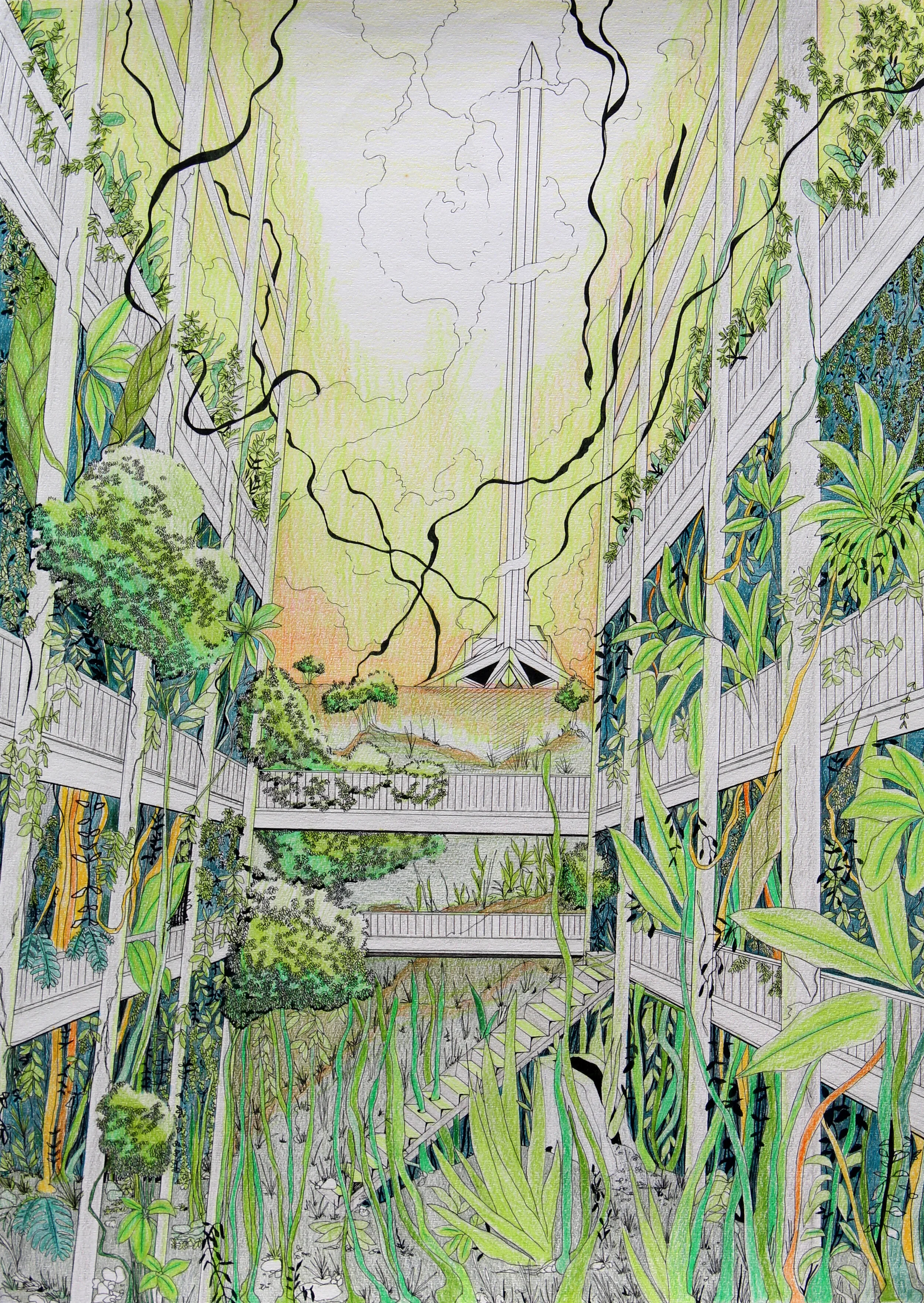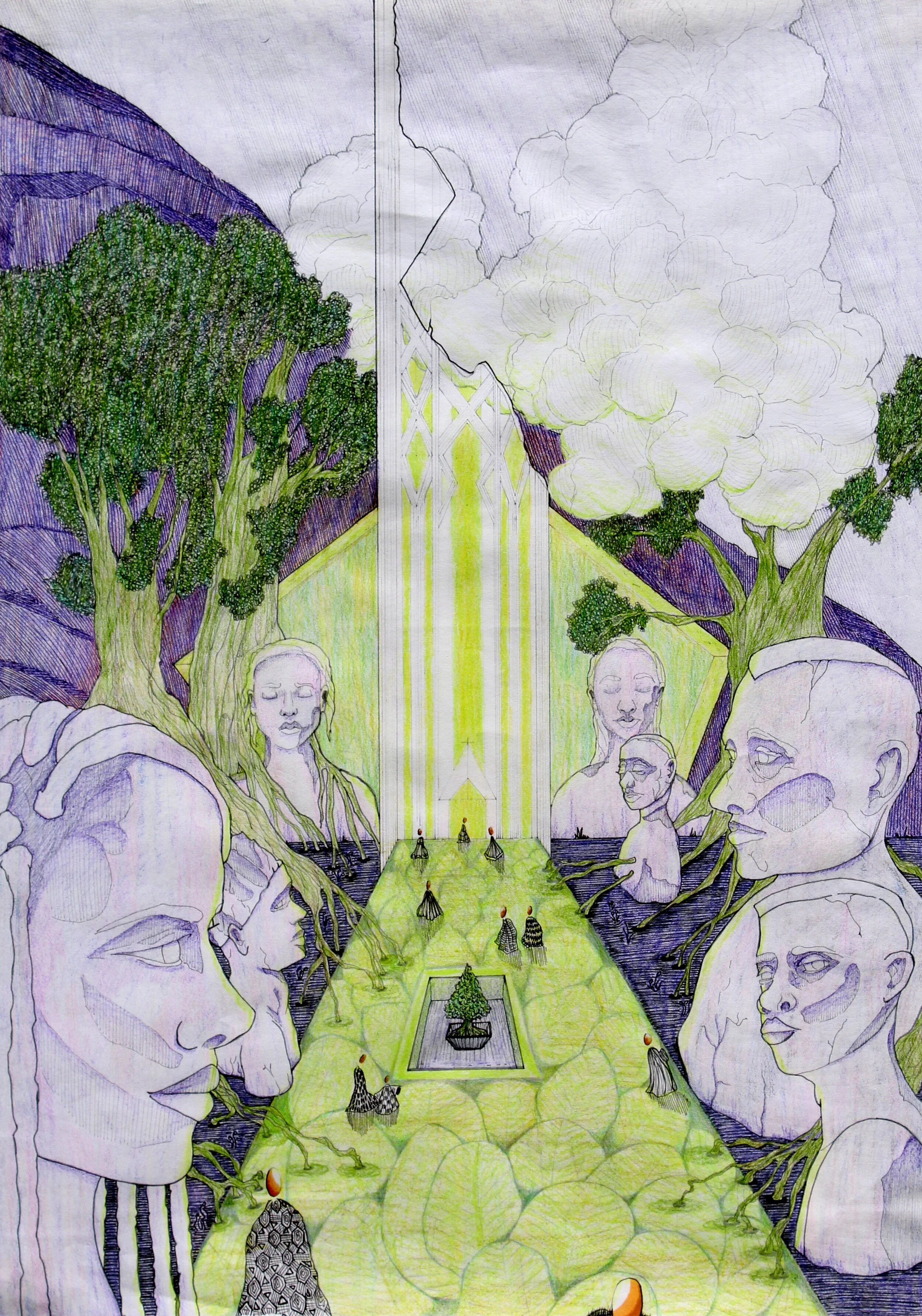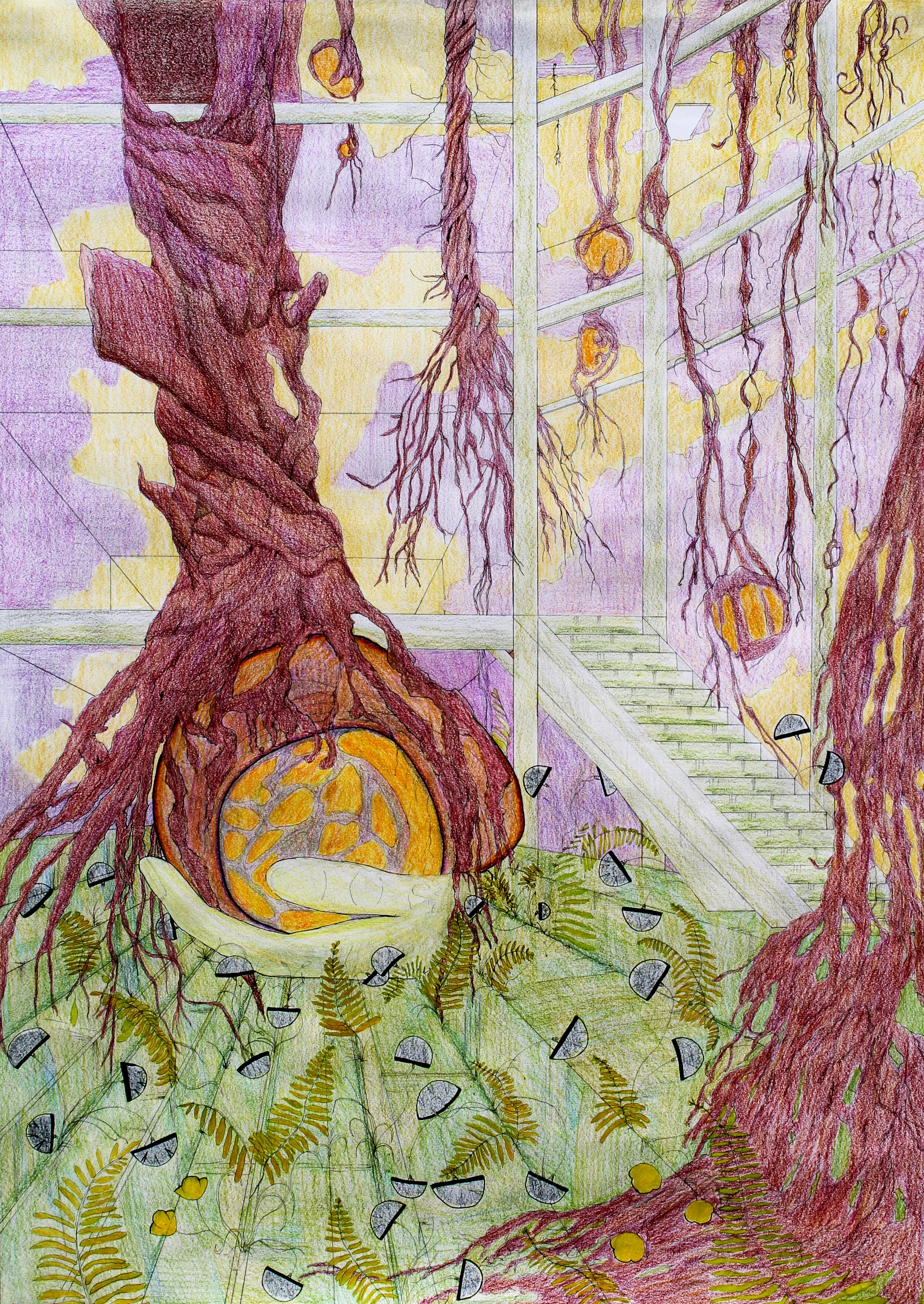
TRAVELLER
The traveller is a series of drawings in pen and coloured pencil on paper. The series explores the future, 1000 years from now. During the pandemic, I missed travelling and started binging Star Trek (and other sci-fi movies). These pieces are places visited by an interplanetary traveller, visiting earth for the first time. Things are a little different now, as the planet retakes the land. People live closer to nature, recycling old structures. Remnants of automatons, statues and other landmarks still linger. The traveller wonders, “What happened here?”.
This series was influenced by Solarpunk. Solarpunk is a relatively new subgenre of speculative fiction that envisions a future where technology and nature work together to create a sustainable and equitable society. Unlike the often grim outlooks of cyberpunk or dystopian narratives, Solarpunk is rooted in optimism and positive change. It imagines cities powered by renewable energy, green architecture, and communities that prioritize ecological balance and social justice.
Check out this subreddit for more info.
The Origins of Solarpunk
Solarpunk emerged in the early 21st century as a response to growing environmental concerns and the need for more hopeful futures in speculative fiction. It draws inspiration from earlier utopian and eco-futurist movements, blending them with contemporary advancements in renewable energy and sustainable living practices. The term "Solarpunk" itself was coined around 2008, and the genre has since grown in popularity, influencing literature, art, and activism.
Key Themes of Solarpunk
Sustainability: Solarpunk stories often focus on sustainable technologies like solar panels, wind turbines, and urban farming.
Community: Emphasizing cooperation and social equity, Solarpunk envisions communities that work together to solve environmental and societal issues.
Aesthetics: The visual style of Solarpunk includes green rooftops, vertical gardens, and architecture that harmonizes with nature.
Solarpunk in Sci-Fi Movies and TV Shows
While Solarpunk is still emerging in mainstream media, several films and TV shows embody its principles:
Movies:
"Tomorrowland" (2015): A film that showcases a futuristic city powered by renewable energy and advanced technology, reflecting the optimistic and innovative spirit of Solarpunk.
"Avatar" (2009): Though not strictly Solarpunk, "Avatar" features themes of ecological harmony and respect for nature, which resonate with the genre.
TV Shows:
"The Expanse" (2015-2022): While primarily a space opera, the series includes elements of Solarpunk in its depiction of sustainable living on Earth and Mars.
"Star Trek: The Next Generation" (1987-1994): This iconic series often portrays a future where technology and nature coexist harmoniously, with episodes emphasizing environmental stewardship and sustainable living.
Solarpunk and Civil Engineering
Civil engineering plays a crucial role in bringing Solarpunk visions to life. By integrating sustainable practices and innovative technologies, civil engineers can design and construct infrastructure that supports a greener future.
Principles of Solarpunk in Civil Engineering
Green Infrastructure: Designing buildings and infrastructure that incorporate green roofs, vertical gardens, and energy-efficient systems.
Renewable Energy Integration: Utilizing solar panels, wind turbines, and other renewable energy sources in urban planning.
Water Management: Implementing sustainable water management systems, such as rainwater harvesting, greywater recycling, and natural filtration systems.
Public Transportation: Developing efficient public transportation systems to reduce reliance on fossil fuels and minimize carbon emissions.
Real-World Examples
The High Line, New York City: A former elevated railway transformed into a green public park, showcasing urban reclamation and green infrastructure.
Bosco Verticale, Milan: A pair of residential towers with vertical forests, providing natural insulation, improving air quality, and enhancing biodiversity.
Masdar City, UAE: A planned city that incorporates renewable energy, sustainable architecture, and efficient public transportation.















